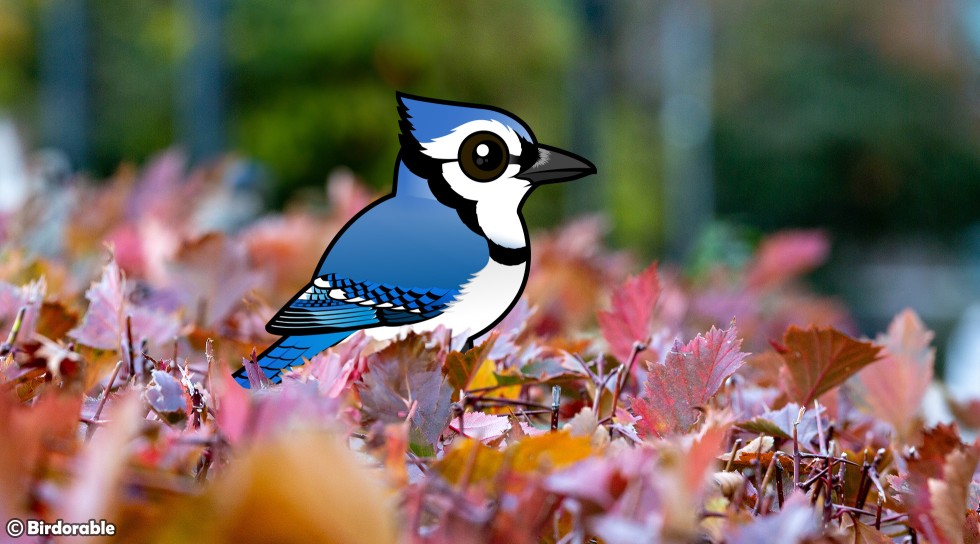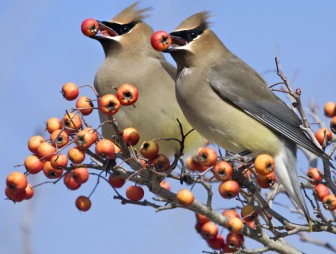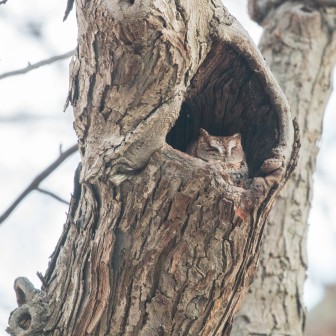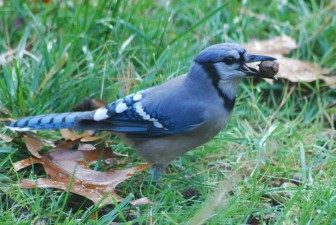Autumn Birds: How They Thrive in Fall’s Changing Landscape

As autumn paints the landscape in vibrant reds, oranges, and yellows, birds are busy preparing for the changing season. While fall signals migration for many species, for others, it's a time to feast and get ready for winter. The connection between birds and fall foliage goes beyond beauty – the seasonal shift brings changes in food availability, shelter, and behavior. Let’s explore how birds interact with the fall landscape and how they make the most of autumn’s bounty.

Cedar Waxwings by Watts (CC BY 2.0)
One of the key changes in autumn is the abundance of food. Trees and shrubs bear fruits, seeds, and nuts that many bird species rely on to fuel up before and during the winter. For example, species like the American Robin and Cedar Waxwing feast on berries from trees such as dogwood, holly, and crabapple. The birds take advantage of the seasonal fruit boom to build up fat reserves that will sustain them through colder months and fuel their migration. In fact, fall is one of the best times to see these birds foraging in large flocks, hopping from tree to tree in search of ripe berries.
In addition to fruit-eating birds, seed-eating species like the Northern Cardinal and House Finch find autumn to be a time of plenty. As trees shed their leaves, seeds from maples, oaks, and other trees fall to the ground, providing an easy meal. You might see these birds foraging among fallen leaves, using their strong beaks to crack open seeds and nuts. For backyard birdwatchers, autumn is a great time to put out seed feeders, as many species will readily visit for an easy snack.

Eastern Screech-Owl by Tim Sackton (CC BY-SA 2.0)
Fall foliage also provides changes in shelter for birds. As the weather cools, birds seek out cozy roosting spots to stay warm during chilly nights. The dense foliage of evergreen trees, such as pines and spruces, becomes a favorite hiding spot for birds like chickadees and nuthatches. These trees offer protection from the wind and cold, as well as cover from predators. Even as deciduous trees lose their leaves, their branches still offer birds places to perch and find refuge.
Some birds, like the Eastern Screech-Owl, rely on tree cavities that become more visible as leaves fall. These natural hollows make perfect roosting spots and can also serve as nesting sites. Woodpeckers, which may have created these cavities for raising chicks earlier in the year, return to them in the fall for warmth and safety. If you’re walking through a wooded area in autumn, keep an eye out for these birds peeking out from tree holes!
For some birds, fall is not just about food and shelter – it’s also a time for social gatherings. Flocks of birds, such as blackbirds and starlings, often form large groups in the fall, moving together through fields and woodlands. These gatherings help birds find food more easily and offer protection from predators, as there is safety in numbers. You might see these birds swirling through the sky in massive flocks, especially in rural areas where food sources like grain fields are plentiful.

Blue Jay by Jeff Hart (CC BY 2.0)
Birds that don’t migrate also take advantage of the fall landscape to prepare for winter. Jays, nuthatches, and some woodpeckers are known for caching food, storing nuts and seeds in hidden spots to eat later when food becomes scarce. Blue Jays, for example, collect acorns in the fall and bury them in the ground, using their sharp memory to retrieve them when needed. This behavior not only helps the birds survive but also plays a role in the dispersal of seeds, as some of the buried acorns may eventually grow into new oak trees.
For birdwatchers, fall is a special time to observe these seasonal behaviors. As birds interact with the changing landscape, they provide a glimpse into how nature adapts to the cooler weather and shorter days. From foraging in colorful foliage to roosting in sheltered tree cavities, birds make the most of autumn's unique opportunities.
Setting up feeders in your yard with seeds, fruits, nuts, and suet can attract a variety of species that are preparing for winter. You can also plant native trees and shrubs that bear fruit in the fall, providing natural food sources for birds like robins and waxwings. Watching the interactions between birds and their autumn habitat is a reminder of how intricately connected animals are to their environment, and how every season brings its own challenges and rewards.





Comments
Leave a comment
Thank you!